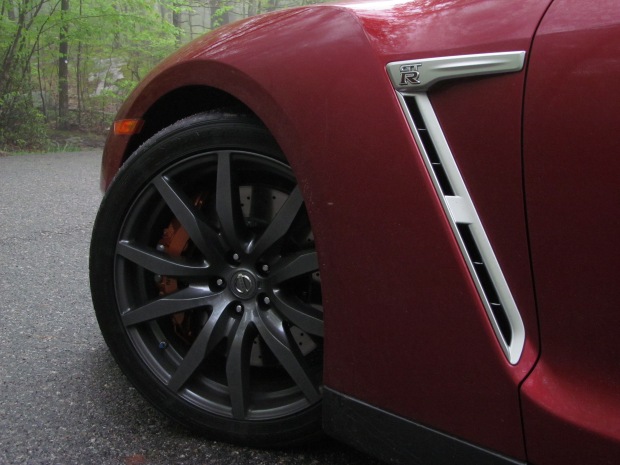Generic brand
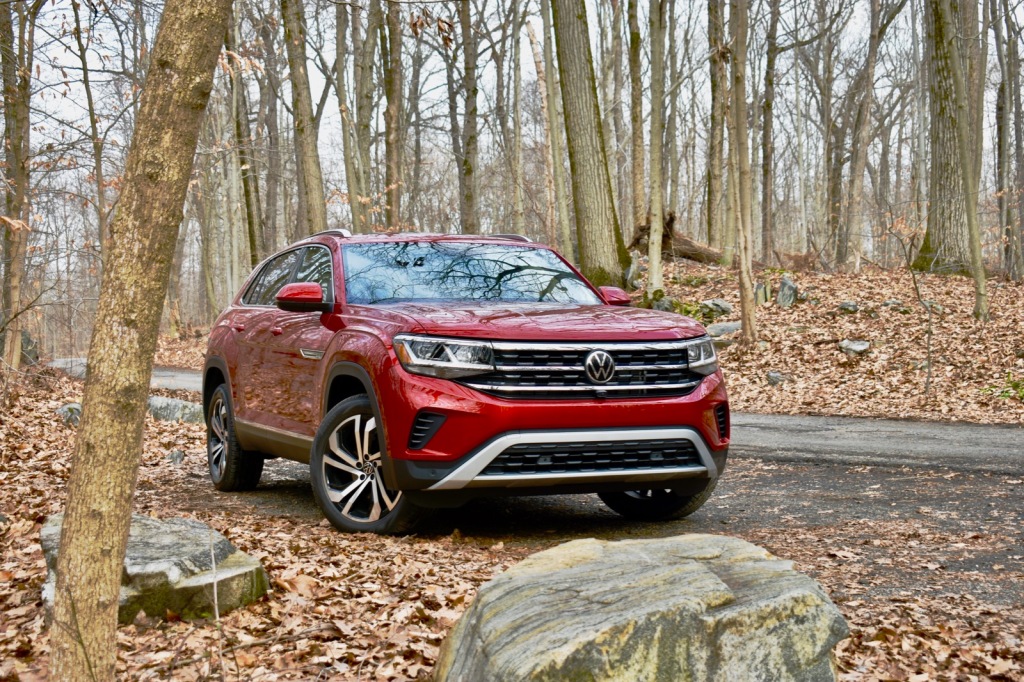
I think I’ve found the ultimate automotive expression of selling out. It’s the 2021 Volkswagen Atlas Cross Sport.
Like a scheming supervillain, Volkswagen is perpetually cycling through plans to conquer the United States market, and the Cross Sport is a subset of one of those plans. For the 2018 model year, VW launched the seven-seat Atlas SUV, a vehicle perfectly suited to American tastes, and built in Chattanooga, Tennessee. With SUV sales booming, VW added a five-seat derivative—the Cross Sport—to the lineup for the 2020 model year.
I recently spent a week test driving a Cross Sport, and was struck by how unlike a VW it was. Take away the badge, and this could have been an SUV from any number of brands. Sure, automakers sometimes populate their lineups with redressed versions of other brands’ cars (the VW Routan was a re-badged Chrysler minivan, for example), but the Cross Sport was engineered entirely in-house. It even shares the MQB platform with more traditional VW models, like the Golf and Jetta.
Partly, it’s the type of vehicle. The Cross Sport is a fairly large SUV (although it’s only a “midsize” by modern standards), and that’s just not something VW has much experience with. Remember, the seven-seat Atlas that begat the five-seat Cross Sport only launched a few years ago. Sure, VW has tried to draw connections between the Cross Sport and old Beetle off-road racers by building a Cross Sport-branded Baja 1000 race truck, but there’s just not much common ground between this SUV and the vehicles VW is known for.
Given enough resources and the right people, any car company can build any kind of car. But that doesn’t mean they’ll get it right on the first try. The Cross Sport isn’t a very good SUV. It rides horribly, the VR6 engine is both gutless and inefficient, the interior looks cheap, and there’s surprisingly little rear passenger space for such a big vehicle. The standard Atlas isn’t very good either but, with its three rows of seats, at least it’s practical.
On a more subjective level, the Cross Sport lacks character. Its exterior styling is generic American toughness, with no references to past VW models. That’s fine if an automaker is looking to chart a new design course, but that’s not what VW did here. The design plays it safe, providing the rugged look VW’s marketing department likely thinks customers want, but in the most inoffensive way possible.
Sometimes it’s good for automakers to break with their own traditions. Ford applied the vaunted Mustang name to an electric SUV, to sensational effect. The Atlas Cross Sport seems like the result of a more cynical impulse. VW knew SUVs were popular, so it created a new one out of an existing model—ensuring greater profit margins in the process. People often lament that interest in cars is waning, but why should anyone care about a car like this? It doesn’t seem like the people who made it do.
Drive your heroes
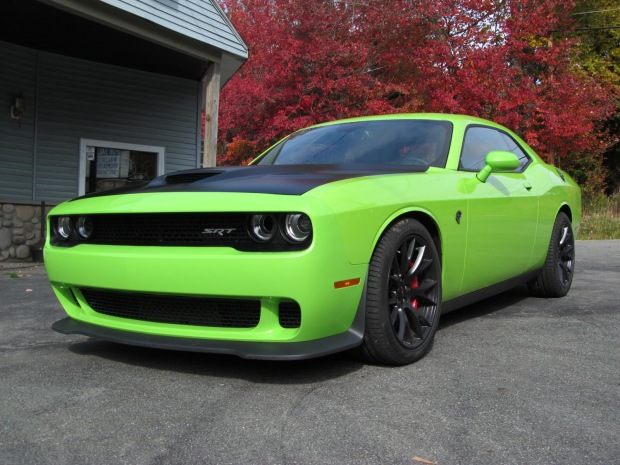 The phrase “don’t meet your heroes” can apply as much to cars as to people. Just as individuals often don’t live up to their admirers’ heroic ideals, cars that people like me obsess over don’t always live up to the hype.
The phrase “don’t meet your heroes” can apply as much to cars as to people. Just as individuals often don’t live up to their admirers’ heroic ideals, cars that people like me obsess over don’t always live up to the hype.
Whether it’s a sleek looking supercar that turns out to be an utter nightmare to drive, or an overhyped newcomer that looks great on paper, but fells numb and unfulfilling in real life, there are many ways a car can fall short of expectations. But it doesn’t have to be that way.
One of the privileges of being a card-carrying member of the International Motor Press Association (IMPA) is being able to attend the group’s Test Days event. Held every fall at Monticello Motor Club about 60 miles north of New York City, it’s an opportunity for journalists to test out a wide variety of cars on public roads, on the track, and off road. At this year’s event, I got to meet a few of my automotive heroes.
I’ve been obsessed with some of these cars for decades, others are fairly recent fixations. I’ve even driven some of them before, but never the way they were intended to be driven. They were all different, but they all lived up to expectations.
 The Subaru WRX was one of my first automotive loves. I still remember my jaw dropping upon seeing one in a dealership back in 2002, when I was in eighth grade and this rally car for the road was just being introduced.
The Subaru WRX was one of my first automotive loves. I still remember my jaw dropping upon seeing one in a dealership back in 2002, when I was in eighth grade and this rally car for the road was just being introduced.
Over a decade later, I got my hands on a 2016 WRX. This is a much more high tech version than the original, and arguably less charmingly simple. It’s bigger, and the one I drove was saddled with a CVT automatic transmission, not the ideal choice for serious driving. Still, the WRX put a smile on my face. Puttering along the back roads around Monticello, it made even relatively slow-speed driving feel exciting. It also fit like a glove: after a short time behind the wheel, it felt comfortably familiar.
That familiarity continued on the track, where the WRX’s turbocharged engine and all-wheel drive grip made a trouble-free lap easy. By the end of my short time with the car, I’d grown so attached that when I parked it, I reflexively reached into my pocket for a key fob, to lock the doors.
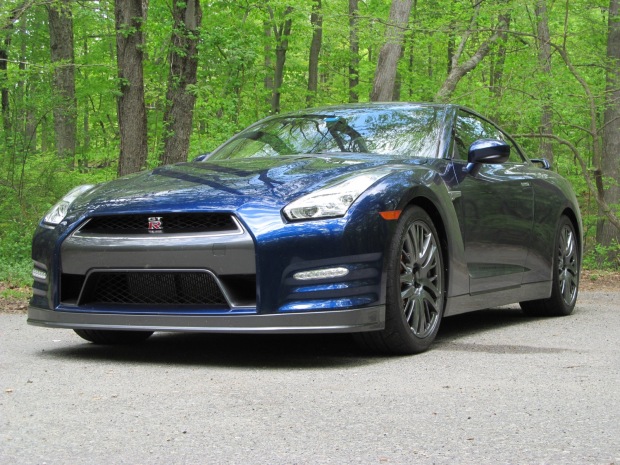 Another Japanese performance legend is the Nissan GT-R. It’s a supercar disguised as a comfortable two-door coupe, that can hang with a Porsche 911 Turbo for a fraction of the price. Years before it was made available in the U.S., the GT-R became a legend as one of the top cars in the Gran Turismo racing-game series. That’s how I first found out about it. That R34-generation model was as alluring mysterious as an alien world, and I eagerly followed the trajectory of the current R35 generation from conception to its arrival in U.S. showrooms.
Another Japanese performance legend is the Nissan GT-R. It’s a supercar disguised as a comfortable two-door coupe, that can hang with a Porsche 911 Turbo for a fraction of the price. Years before it was made available in the U.S., the GT-R became a legend as one of the top cars in the Gran Turismo racing-game series. That’s how I first found out about it. That R34-generation model was as alluring mysterious as an alien world, and I eagerly followed the trajectory of the current R35 generation from conception to its arrival in U.S. showrooms.
I’ve driven the GT-R before, but always on relatively low-speed public roads, with ever-vigilant cops and plenty of other cars. So when I finally got a chance to see what the 545-horsepower beast known as “Godzilla” could really do, I couldn’t get across the parking lot fast enough. While the GT-R has garnered plenty of praise for its unbelievable performance, I’d also heard plenty of criticism. It’s too heavy, and relies too much on sensation-dulling technology, some have said.
The GT-R certainly is big by sports car standards, but like its namesake, the Nissan is also ferocious. To indulge a cliche, it attacked the corners, but also showed amazing precision. Its clever all-wheel drive system and electronic aids intervened in the only way you want them to, helping to smooth things out, without wresting control away from the driver.
 It’s not all about speed, though. Off road, it requires as much precision to maintain forward momentum at 2 mph as it does to thread a car through corners at track speeds. One of the legends of this realm is the Mercedes-Benz G-Class, a converted military vehicle that’s been in production since the 1970s. Known as the “G-Wagen,” it’s been masquerading as a luxury SUV in the U.S. for about a decade now.
It’s not all about speed, though. Off road, it requires as much precision to maintain forward momentum at 2 mph as it does to thread a car through corners at track speeds. One of the legends of this realm is the Mercedes-Benz G-Class, a converted military vehicle that’s been in production since the 1970s. Known as the “G-Wagen,” it’s been masquerading as a luxury SUV in the U.S. for about a decade now.
I love military vehicles, so this boxy Mercedes immediately stole my heart. I never thought I’d get to drive one, but then I found myself crawling down a steep hill in the woods behind the track, with an instructor making pronouncements about left-foot braking and “trusting” the vehicle, like some sort of off-road guru. Despite seeming almost as wide as the course, the G-Wagen proved an able partner in navigating the terrain.
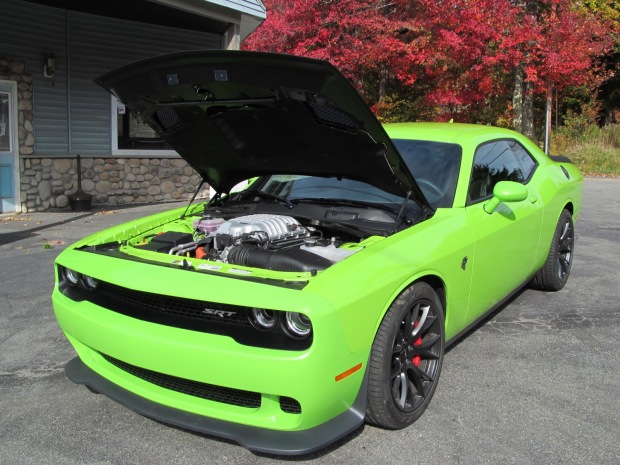 I was at least somewhat familiar with all of these cars, either from years of past admiration or previous drives, but the Dodge Challenger and Charger Hellcat twins were completely new to me. They hit the automotive world like a bomb last year, both brandishing a 6.2-liter supercharged Hemi V8 with 707 horsepower. They may be humble Dodges, but the Challenger and Charger Hellcats can both top 200 mph. The Charger Hellcat is actually the fastest four-door car currently in production.
I was at least somewhat familiar with all of these cars, either from years of past admiration or previous drives, but the Dodge Challenger and Charger Hellcat twins were completely new to me. They hit the automotive world like a bomb last year, both brandishing a 6.2-liter supercharged Hemi V8 with 707 horsepower. They may be humble Dodges, but the Challenger and Charger Hellcats can both top 200 mph. The Charger Hellcat is actually the fastest four-door car currently in production.
After hearing a colleague’s tale of sliding sideways up a hill in one of these, I was a little intimidated by the Challenger Hellcat. But with some gentle throttle application and the electronic aids turned on, it turned out to be just as easy to pilot as many other performance cars, but much more dramatic.
Hit the throttle, and you’d better be awake. The Hellcat engine pummels you with acceleration and, yes, the 707 hp makes a big difference over less-powerful Challenger variants. The Hellcat felt like it just wanted to keep accelerating until the very horizon was splattered across its windscreen like a bug, the supercharger cackling maniacally the whole way. In short, it lived up to its billing as a hellacious muscle car.
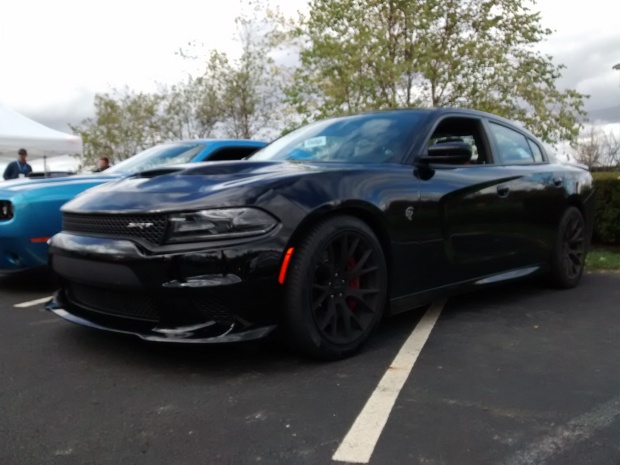 But muscle cars aren’t supposed to be able to handle. I wasn’t sure what to expect when I took the Charger Hellcat out on the track, other than it might be… difficult. Yet while not exactly nimble, the big four door acquitted itself pretty well, and I was very impressed by what it could do in the hands of the Chrysler driving instructor I rode shotgun with after my lap. Where I felt the need to slow down to maintain control, he just barreled through like the Charger was a tiny Miata.
But muscle cars aren’t supposed to be able to handle. I wasn’t sure what to expect when I took the Charger Hellcat out on the track, other than it might be… difficult. Yet while not exactly nimble, the big four door acquitted itself pretty well, and I was very impressed by what it could do in the hands of the Chrysler driving instructor I rode shotgun with after my lap. Where I felt the need to slow down to maintain control, he just barreled through like the Charger was a tiny Miata.
Maybe it’s just that today’s cars are more refined than their predecessors, or that consumers increasingly demand cars that can do everything well, rather than sacrifice practicality and comfort to performance or style. Either way, the upside seems to be that today, if a car looks good, it probably is.
Amtrak Philadelphia crash, Positive Train Control, and the tech zeitgeist
Posted by lib1187 in Technology on May 18, 2015
 After the horrific Amtrak crash in Philadelphia earlier this week that killed eight people, it’s natural for railroad officials, regulators, and the public to reflexively search for something to do.
After the horrific Amtrak crash in Philadelphia earlier this week that killed eight people, it’s natural for railroad officials, regulators, and the public to reflexively search for something to do.
Tragedies like this shouldn’t happen, and it’s natural to want to respond with some sort of action that ensures they don’t.
A lot of discussion in that regard seems to focus on the implementation of Positive Train Control (PTC), a technology that’s designed to slow or stop trains when crews ignore signals and speed limits, and that railroads are already mandated to start using soon.
The general consensus is that a functioning PTC system would have stopped Amtrak Northeast Regional train 188 from entering a 50 mph curve at the 100 mph investigations indicate it was traveling at.
That seems fairly definitive, but the discussion shouldn’t end there. Today we’re used to jumping to the conclusion that technology is the only answer, but perhaps as much because of its flashiness as its superiority.
PTC uses sensors, wireless, signals, and control computers to determine a train’s position and speed, decide whether said train is operating within acceptable parameters (i.e., obeying speed limits and signals), and can slow or stop a train if necessary.
The Federal government requires all major railroads to put PTC systems into operation by December 31, although the industry has repeatedly said that deadline is unrealistic. Legislation has been introduced to extend the deadline by varying amounts.
Congress passed the mandate as part of the 2008 Rail Safety Improvement Act, and it’s been vigorously debated by politicians and industry personalities since then. But it’s only recently been brought to the attention of the broader public by the Amtrak crash, as well as another deadly crash back in December on the New York-area Metro North Railroad.
That’s led to headlines like “Could technology have prevented the crash?” (CNN) and “Speed control technology could have stopped Amtrak derailment (NPR), which appear to frame the debate purely in terms of why a life-saving technology wasn’t available.
In an age where we look to Apple and Google to save the world, and our phones, tablets, smartwatches, and other digital ephemera to run our lives, that’s a comfortable perspective. But it’s also problematic.
Because while Congress requires railroads to deploy PTC, the regulations don’t comprise a technical standard. PTC systems exist–Amtrak already uses it on the Northeast Corridor where the crash occurred–but none that have proven to be interoperable across all railroads and all pieces of rolling stock.
In 2013, former National Transportation Safety Board Chair Deborah Hersman remarked that it took NASA less time to land a man on the moon than it’s taken railroads to implement PTC.
At that’s despite the major freight railroads spending over $5 billion to date on PTC. Amtrak and state and local government-operated passenger carriers are getting massive infusions of cash as well.
Earlier this year, the U.S. Department of Transportation tentatively approved a $976 million loan to New York’s Metropolitan Transportation Authority to cover PTC installation on Metro North and the Long Island Railroad, according to Trains magazine.
Over the past few years, Congress has shown consistent hostility when it comes to merely approving a budget for Amtrak. PTC will likely require additional infusions of cash into railroad infrastructure; will it really show enthusiasm for that?
But there is an alternative to the technical and financial challenges of PTC.
The crashes that sparked interest in PTC all have one thing in common: lone engineers in the cabs of speeding trains who all got distracted or otherwise incapacitated. So why not just put a second person in the cab?
Like a copilot in an airliner cockpit, a second crew member in a locomotive cab could act as a backup. And unlike PTC computers, railroads already have a pretty good idea of how to train humans for this job.
But adding ensuring that there are two people in the cab of every train will still cost money, and like most other businesses, railroads don’t generally like to hire more people than they feel they need. Two-person crews are still required for freight trains, but there’s already talk of eliminating that requirement when PTC goes live.
So in a way, PTC and expanded crews sit in opposition to each other. Regulations and the constant search for costs to cut mean the public could have to pick one or the other. And even though it’s the simpler solution, expanding crews will likely lose out to PTC.
Positive Train Control is simply the more dramatic solution. It makes for a better story, fits in with the current technological zeitgeist, and catches the public’s attention. Simply hiring more people isn’t very dramatic, or disruptive, or any other Silicon Valley buzzwords, even if it might be the better solution.
We’ll probably never know. Congress has already committed to a PTC mandate, and railroads have already spent billions of dollars on it. It’s also much easier to sell the public on a magic technology than the competence and effectiveness of multiple human beings working together.
Faceless in the crowd
Posted by lib1187 in Language, Technology on February 27, 2015
As in a good fantasy story, there are parts of the Internet you just shouldn’t go to.
Peruse the comments section of just about any website, and you’re likely to run across vitriol-spewing trolls, hurling obscenities–and sometimes even rape or death threats–in arguments about seemingly everything.
In “The Epidemic of Facelessness,” a recent opinion piece for The New York Times, Stephen Marche attributes the rise of casually monstrous behavior on the Internet to the fact that attackers never see their victims’ faces.
Pulling examples from a diverse catalog that includes ancient Roman law, French phenomenology, and neuroscience, Marche argues that actually seeing another person’s face is the key to empathy.
That doesn’t typically happen online, hence the ease with which rape and death threats get thrown around.
It also means people need to work to imbue others with humanity. Attackers need to realize the people they’re threatening are, well, people, and their attacks should be understood in the context of a complex human psyche.
Remembering not to leave our humanity online is an admirable and necessary goal to work towards, but it will likely get harder to do as we rely more on indirect digital communication.
Because while society still shuns Internet trolls, it also continues to devalue humanity at the expense of performing discreet tasks more efficiently.
That’s what digital technology does. It lets us do everything from shopping to wishing each other “Happy Birthday” quickly, cleanly, and efficiently.
Saving money and time is good, of course, but it’s possible this obsession with digital efficiency is also grooming people to be less tolerant of each other.
The number of situations where strangers are forced to candidly interact in everyday life is diminishing. Does using one of those self-cehckout machines really save that much time, or do you just prefer not having to exchange pleasantries with a human cashier?
It’s not that people need to be in the mood to talk to each other all of the time, but with Internet-related technology making it so easy to put each other at a distance, it’s hard to see how the “epidemic of facelessness” can be cured.
Beneath the shiny confidence of Silicon Valley futurism, the way of life being constructed around the Internet is potentially damaging to human empathy, even if it is easier.
The Apple Car is coming
Posted by lib1187 in Cars, Technology on February 23, 2015
 The news that Apple could possibly be investigating the development of a future production car is quite simply the biggest automotive story since the car was invented.
The news that Apple could possibly be investigating the development of a future production car is quite simply the biggest automotive story since the car was invented.
Apple’s reported hiring of around 200 people with automotive-related experience indicates that the Cupertino, California,-based company is preparing to redefine the automotive industry the way it has redefined so many other industries in the past.
Even though no one outside of Apple knows anything specific about the car—or if it will ever be sold to consumers—we can tell that it will completely change the industry and the fundamental act of moving from one point in space to another.
Here are some predictions about what the car will be like, how Apple will bring a fresh Silicon Valley approach to the moribund Detroit auto industry, and why your car will soon be so hopelessly obsolete that you might as well go out into your driveway and set it on fire right now.
The Apple Car will change everything about the way cars are made and sold. Like the company’s other products, it will be built in a factory in China by underpaid workers entirely using components sourced from anonymous suppliers, but will be designed by Apple in California. No car today is made like that.
Tesla Motors pioneered the idea of selling cars directly to customers instead of through franchised dealers, but Apple will take things further.
Instead of selling cars through its trademark Apple Stores, it won’t sell them anywhere. This streamlines the buying process, saving consumers valuable time they’d normally have to waste test driving, researching, or finding out what a car looks like before buying.
And should those consumers accidentally stumble upon an Apple Car through this disruptive, innovative, new distribution system, they’ll find a vehicle that’s like nothing else on the road today.
The Apple Car won’t be fast, luxurious, spacious, or particularly reliable. Early reports suggest it will feature “minivan-like” styling.
So while existing car companies are stuck in the old way of building cars based on qualities people find appealing or that enable said vehicles to fulfill a practical purpose, Apple will shake things up by being disruptive and innovative.
The Apple Car will transcend these petty considerations of “practicality” and “desirability,” ushering in a new era of transportation the same way the iPhone changed communication. Even though we have no details of the car itself, it’s clear we’re looking at that much of a seismic change here.
In fact, it doesn’t seem unreasonable to predict that the Apple Car will fly, or drive underwater, or maybe even both. It will also be thought controlled.
In addition, the Apple Car is going to end world hunger. Now, you might ask how selling a car is in any way related to a complex global socioeconomic issue like food distribution, but given Apple’s past record of innovation, it’s safe to say that we can expect big things.
To sum it all up, we are essentially primitive beings living on the cusp of the invention of fire in this pre-Apple Car epoch. The Apple Car is coming, and once it’s here we won’t be able to imagine living without it, and not just because we will willfully ignore that recent past out of an intense obsession with feeling technologically savvy.
We pray the merciful Tim Cook and his ministers take pity on us and produce the Apple Car soon, so that we don’t have to wallow in this sad, unfulfilled existence for long.
Apollo 45
Posted by lib1187 in Politics, Technology on July 25, 2014
 This week marks the 45th anniversary of the Apollo 11 moon landing, and people are posting their recollections of that event under #Apollo45.
This week marks the 45th anniversary of the Apollo 11 moon landing, and people are posting their recollections of that event under #Apollo45.
I wasn’t born until well after the last moon mission took place, but the story has been conveyed so vividly that I almost feel like I experienced it firsthand.
The footage of the Saturn V rocket lifting off from Cape Canaveral, Neil Armstrong’s iconic words, and the image of an American flag on the moon’s surface have all been burned into my consciousness.
Yet the whole event seems unreal. It’s still hard to believe that massive rocket propelled the tiny Apollo spacecraft to the moon, and that the entire complex operation worked not just once, but multiple times, ending with the safe return of the astronauts even when technical problems on Apollo 13 made that outcome seem unlikely.
The United States hasn’t accomplished anything on that scale since the last moon mission in 1972, so perhaps it’s not surprising that so many people believe the whole thing was faked.
Obviously, it wasn’t but the Apollo missions may turn out to be a historical fluke. There’s plenty of enthusiasm for continuing the journey into space with a return to the moon, or even a mission to Mars, but the country can’t seem to muster the political will to make that happen.
As Neil deGrasse Tyson pointed out in his excellent book Space Chronicles, the Apollo program was a product of defense interests as much as scientific interests. The Cold War was raging, and the Soviets needed to be beaten.
While the U.S. has plenty of problems now, none of them rise to the quite existential-threat level of impending annihilation by a communist superpower. The stakes are just too low.
A renewed space program could have many benefits in terms of pure science or even jump-starting the economy, but those are just too ethereal, and the fact that U.S. astronauts can hitch rides with the Russians while maintaining national dignity proves that space is no longer an arena for geopolitical chest thumping.
So will future generations have to accept that Apollo was unique to its time, an inspiring product of a terrible conflict that threatened to destroy the world?
Perhaps another momentous event (say, the arrival of a Vulcan survey ship) will galvanize Earth’s population again, but until then it seems we’ll have to remain content with memories of past triumphs.
Nashville: First impressions
 One of the perks of writing about cars is getting invited to different places by car companies to go and drive them. That’s what got me down to Nashville last week.
One of the perks of writing about cars is getting invited to different places by car companies to go and drive them. That’s what got me down to Nashville last week.
Nissan held an event in one of the Music City’s nicer suburban neighborhoods, but I also had enough down time to explore some of the city itself.
Visitors often harp on the contrasting elements of cities, and Nashville is anything but homogenous. However, that doesn’t really add much to its charm.
Home base for my two-day stay was the Omni, a brand new hotel abutting a brand new convention center, a new-ish sports arena, and the Country Music Hall of Fame. You’ll never see sidewalks as free of gum and urine stains as the ones that surround this block.
This seems to be the image Nashville is trying to project. Almost everywhere I went, I saw new construction or vacant lots ripe for development. It’s a landscape of avant grade restaurants improbably wedged into industrial ruinscapes.
Yet just a block from the Omni and its pristine sidewalks is Broadway, the heart of Nashville’s tourist district. This is where you’ll find all of the honky tonks, novelty Elvis statues, and cowboy boots you’d expect of the home of country music.
This area is definitely not pristine. Everything’s chintzy, worn in, and a bit dirty, as a stereotypical tourists district should be. It’s also hermetically sealed off from the rest of Nashville.
 Heading further downtown, there wasn’t much else to see. It’s full of buildings, all in good repair, but there’s nothing really there. Maybe I missed something during this admittedly brief visit, but I couldn’t find a reason to stop until I reached the Tennesse State Capitol.
Heading further downtown, there wasn’t much else to see. It’s full of buildings, all in good repair, but there’s nothing really there. Maybe I missed something during this admittedly brief visit, but I couldn’t find a reason to stop until I reached the Tennesse State Capitol.
This may have actually been my favorite part of Nashville. The building sits high on the hill with great views, and there’s an epic statue of Andrew Jackson standing over a small memorial containing the remains of James K. Polk, his presidential protege. The symbolism was fantastic.
So while there were many postcard views, Nashville just didn’t seem like a real city. It was decidedly urban, but it’s hard to imagine what people actually do there when the tourists go away.
Or do the tourists just never go away?
Driving the Nissan GT-R
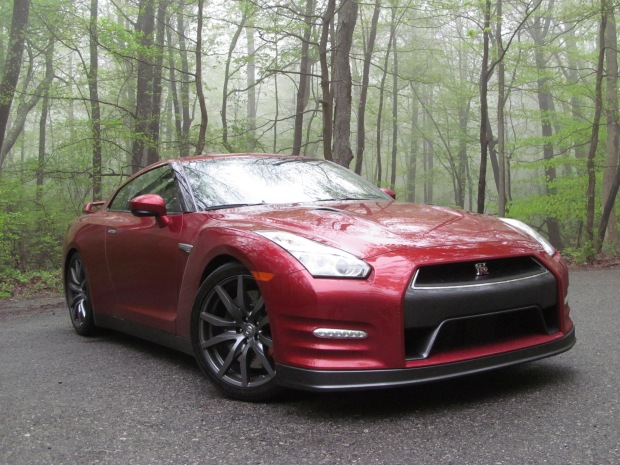 Normally the words “Nissan” and “supercar” don’t belong in the same sentence, but the automotive world is full of surprises.
Normally the words “Nissan” and “supercar” don’t belong in the same sentence, but the automotive world is full of surprises.
The Nissan GT-R is widely regarded as one of the world’s most capable performance cars, and one that can routinely embarrass products of more prestigious manufacturers like Porsche.
I recently got the chance to see what all of the fuss is about during a short drive in New York’s Bear Mountain State Park.
When the GT-R arrived in the United States as a 2009 model, it was an anomaly. It was hard to picture a fairly-heavy four-seat coupe that could lap Germany’s infamous Nurburgring faster than a contemporary Porsche 911 Turbo, and earn the nickname “Godzilla.”
That is, unless you were privy to the generations of GT-R that preceded it. Even before it hit U.S. showrooms, the GT-R had a ready-made fan base of people who had “driven” its predecessors in video games like Gran Turismo.
The current R35 generation stepped things up, too. Previous versions were actually hot-rodded Skyline coupes, and went by the proper name Skyline GT-R. However, the R35 is a bespoke design.
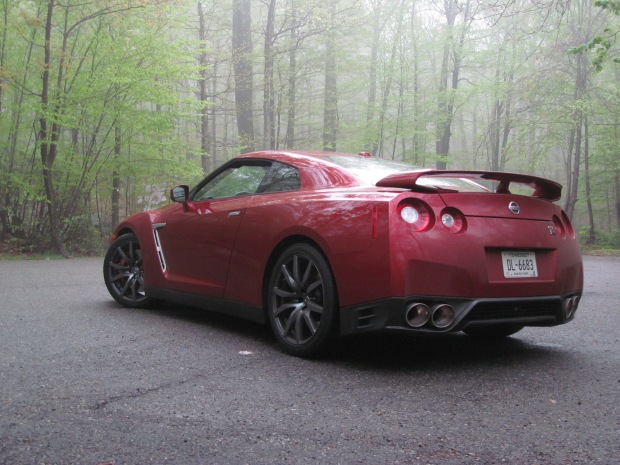 Under the hood is a 3.8-liter, twin turbocharged V6, connected to a six-speed, dual-clutch transaxle and all-wheel drive.
Under the hood is a 3.8-liter, twin turbocharged V6, connected to a six-speed, dual-clutch transaxle and all-wheel drive.
Nissan has consistently improved this powertrain since the GT-R’s launch. Where 2009 models produced 480 horsepower and 463 pound-feet of torque, the 2015 GT-R I drove boasts 545 hp and 463 lb-ft.
That’s enough to get the 2015 GT-R from 0 to 60 mph in 2.7 seconds. If that’s not good enough, there’s an even more extreme GT-R NISMO model available.
I didn’t get the chance to test that performance during my short drive, which was on a slow road littered with cops. That didn’t mean I wasn’t humbled by the GT-R’s awesome reputation.
Godzilla was remarkably civil in this situation. Aside from the wonderfully-loud exhaust, its supercar nature is ratcheted down in everyday driving. The controls respond with immediacy but aren’t twitchy and, with the adjustable suspension in a less-aggressive setting, the ride is smooth.
In fact, the only real downside is that it seems like a waste to not drive the GT-R fast.
I leaned into the throttle briefly and was rewarded with a ferocious burst of acceleration. Given how docile the car had been up to that point, it was a revelation akin to seeing the machine elves in the walls of reality.
So while the GT-R is perfectly enjoyable to drive at normal speeds, its specialness doesn’t really become apparent until you prod it.
All things considered, that’s not much of a flaw. Helmets aren’t that expensive.
Driving the Jaguar F-Type
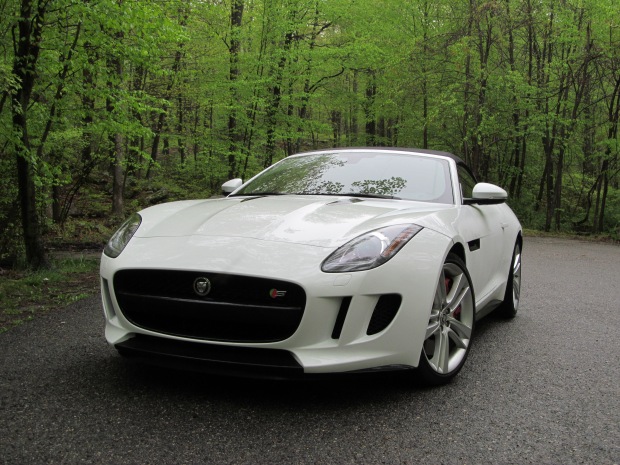 Yesterday, I had the pleasure of driving the 2014 Jaguar F-Type, something that’s been years in the making.
Yesterday, I had the pleasure of driving the 2014 Jaguar F-Type, something that’s been years in the making.
Just over two years, to be precise. The F-Type will always be special to me not just because it’s a gorgeous, powerful sports car, but because it’s more or less the first car I’ve followed as an automotive journalist from start to finish.
I’d only been freelancing for Digital Trends for a few months in the spring of 2012, but the New York Auto Show was just a Metro-North ride away, and DT was happy for the coverage.
The star attraction of the Jaguar-Land Rover press conference was supposed to be a convertible version of the Range Rover Evoque crossover, but it turned out to be a red herring.
What really grabbed headlines was Jaguar’s announcement that it would build a new sports car, followed by a short video with a sound byte from its glorious V8, and a photo of a camouflaged prototype.
Naturally, the car wouldn’t be unveiled for some time but, after months of speculation, spy shots, auto show events, and media drives, the F-Type is in showrooms.
I finally caught up with this sensational sports car at an International Motor Press Association event in Bear Mountain, New York. My driving time was limited, and rain meant the top had to stay up, but it was definitely worth the wait.
The cabin of the F-Type is snug but well-appointed, like a luxurious jet fighter. The growl from the engine in this V8 S model makes a stereo superfluous.
As the name states, that engines has eight cylinders. It displaces 5.0 liters and, with help from a supercharger, produces 495 horsepower and 460 pound-feet of torque. Jaguar says it will do 0 to 60 mph in 4.1 seconds.
Some might decry the lack of a manual transmission, but the eight-speed automatic seemed up to the task of sending power to the rear wheels as I guided the F-Type around curvy Hudson Valley roads.
There are many sports cars with reportedly-good road manners, but this Jag is genuinely enjoyable in an everyday context.
The interior is comfortable, and the overrun-crackle emitted by the exhaust in “Dynamic” mode is fantastic, even when you’re stuck behind slow-moving traffic.
Whenever a carmaker’s announcement involves words like “sport” and “supercharged,” you expect the resulting automobile to be good. With the Jaguar F-Type, it’s nice to be able to confirm that it is.


